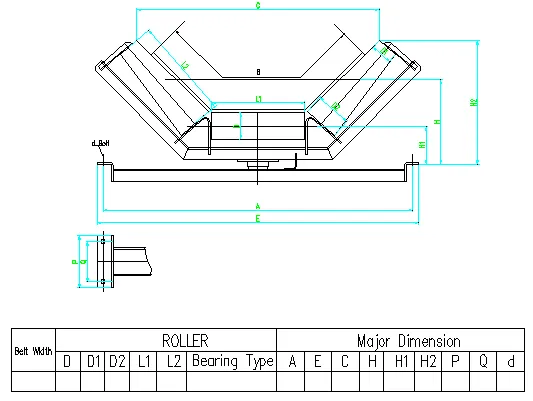 Afrikaans
Afrikaans  Albanian
Albanian  Amharic
Amharic  Arabic
Arabic  Armenian
Armenian  Azerbaijani
Azerbaijani  Basque
Basque  Belarusian
Belarusian  Bengali
Bengali  Bosnian
Bosnian  Bulgarian
Bulgarian  Catalan
Catalan  Cebuano
Cebuano  Corsican
Corsican  Croatian
Croatian  Czech
Czech  Danish
Danish  Dutch
Dutch  English
English  Esperanto
Esperanto  Estonian
Estonian  Finnish
Finnish  French
French  Frisian
Frisian  Galician
Galician  Georgian
Georgian  German
German  Greek
Greek  Gujarati
Gujarati  Haitian Creole
Haitian Creole  hausa
hausa  hawaiian
hawaiian  Hebrew
Hebrew  Hindi
Hindi  Miao
Miao  Hungarian
Hungarian  Icelandic
Icelandic  igbo
igbo  Indonesian
Indonesian  irish
irish  Italian
Italian  Japanese
Japanese  Javanese
Javanese  Kannada
Kannada  kazakh
kazakh  Khmer
Khmer  Rwandese
Rwandese  Korean
Korean  Kurdish
Kurdish  Kyrgyz
Kyrgyz  Lao
Lao  Latin
Latin  Latvian
Latvian  Lithuanian
Lithuanian  Luxembourgish
Luxembourgish  Macedonian
Macedonian  Malgashi
Malgashi  Malay
Malay  Malayalam
Malayalam  Maltese
Maltese  Maori
Maori  Marathi
Marathi  Mongolian
Mongolian  Myanmar
Myanmar  Nepali
Nepali  Norwegian
Norwegian  Norwegian
Norwegian  Occitan
Occitan  Pashto
Pashto  Persian
Persian  Polish
Polish  Portuguese
Portuguese  Punjabi
Punjabi  Romanian
Romanian  Russian
Russian  Samoan
Samoan  Scottish Gaelic
Scottish Gaelic  Serbian
Serbian  Sesotho
Sesotho  Shona
Shona  Sindhi
Sindhi  Sinhala
Sinhala  Slovak
Slovak  Slovenian
Slovenian  Somali
Somali  Spanish
Spanish  Sundanese
Sundanese  Swahili
Swahili  Swedish
Swedish  Tagalog
Tagalog  Tajik
Tajik  Tamil
Tamil  Tatar
Tatar  Telugu
Telugu  Thai
Thai  Turkish
Turkish  Turkmen
Turkmen  Ukrainian
Ukrainian  Urdu
Urdu  Uighur
Uighur  Uzbek
Uzbek  Vietnamese
Vietnamese  Welsh
Welsh  Bantu
Bantu  Yiddish
Yiddish  Yoruba
Yoruba  Zulu
Zulu troughing roller
Understanding Troughing Rollers A Key Component in Material Handling Systems
Troughing rollers play a crucial role in conveyor systems, used extensively across various industries including mining, agriculture, and material handling. These rollers are designed to support and guide the conveyor belt as it transports materials from one location to another. Their unique shape, which forms a trough, helps to contain and stabilize the bulk material being conveyed, ensuring efficient and safe operation.
Design and Functionality
The primary function of troughing rollers is to provide both support and alignment for the conveyor belt. Typically, they are set at an angle, allowing the belt to form a 'U' shape, which enhances its load-carrying capacity. This design minimizes spillage and facilitates the smooth movement of bulk materials, such as coal, sand, gravel, or agricultural products.
Troughing rollers usually come in three configurations the 20-degree, 35-degree, and 45-degree angles. The choice of angle affects the belt's load-carrying capacity and the volume of material it can effectively transport. For instance, a 20-degree troughing roller is often suitable for lighter loads, while a 45-degree roller is better suited for heavier, bulk materials.
Types of Troughing Rollers
Troughing rollers are available in different materials and designs, tailored for specific applications. The most commonly used materials include steel and plastic, with steel offering durability and strength under heavy loads, whereas plastic is lighter and resistant to corrosive materials.
Additional types of troughing rollers include
1. Impact Rollers These are designed to absorb the energy of falling materials, reducing damage to the conveyor belt and extending its lifespan.
2. Self-Cleaning Rollers Built with features that prevent material build-up, these rollers ensure the continued efficiency of the conveyor system by minimizing maintenance needs.
3. Return Rollers These support the return side of the conveyor belt, ensuring proper alignment and preventing sagging.
Benefits of Troughing Rollers
troughing roller

The advantages of incorporating troughing rollers into conveyor systems are significant
- Efficiency By confining materials within a trough, these rollers reduce spillage and loss of materials, enhancing overall efficiency
.- Reduced Wear and Tear Proper alignment provided by troughing rollers minimizes friction and wear on the conveyor belt, leading to lower maintenance costs and longer operational life.
- Flexibility Troughing rollers can be adjusted and configured to match the specific requirements of various materials and load capacities, making them versatile components in material handling.
Maintenance Considerations
While troughing rollers are designed for durability, regular maintenance is essential to ensure their optimal performance. This includes
- Periodic inspections for wear and tear.
- Ensuring proper alignment and tension of the conveyor belt.
- Cleaning rollers and ensuring there is no material build-up that could impact performance.
- Lubricating bearing housings to prevent overheating and extend operational life.
Conclusion
In conclusion, troughing rollers are integral to the efficiency and effectiveness of conveyor systems. Their ability to support and guide the conveyor belt while containing bulk materials is vital in minimizing operational losses and enhancing productivity. By understanding their design, functionality, and maintenance requirements, industries can optimize their material handling processes and ensure the longevity of their equipment. Whether in a manufacturing plant, a mining operation, or an agricultural setting, troughing rollers represent a smart investment in streamlined operations and effective material transportation.
-
Revolutionizing Conveyor Reliability with Advanced Rubber Lagging PulleysNewsJul.22,2025
-
Powering Precision and Durability with Expert Manufacturers of Conveyor ComponentsNewsJul.22,2025
-
Optimizing Conveyor Systems with Advanced Conveyor AccessoriesNewsJul.22,2025
-
Maximize Conveyor Efficiency with Quality Conveyor Idler PulleysNewsJul.22,2025
-
Future-Proof Your Conveyor System with High-Performance Polyurethane RollerNewsJul.22,2025
-
Driving Efficiency Forward with Quality Idlers and RollersNewsJul.22,2025





























